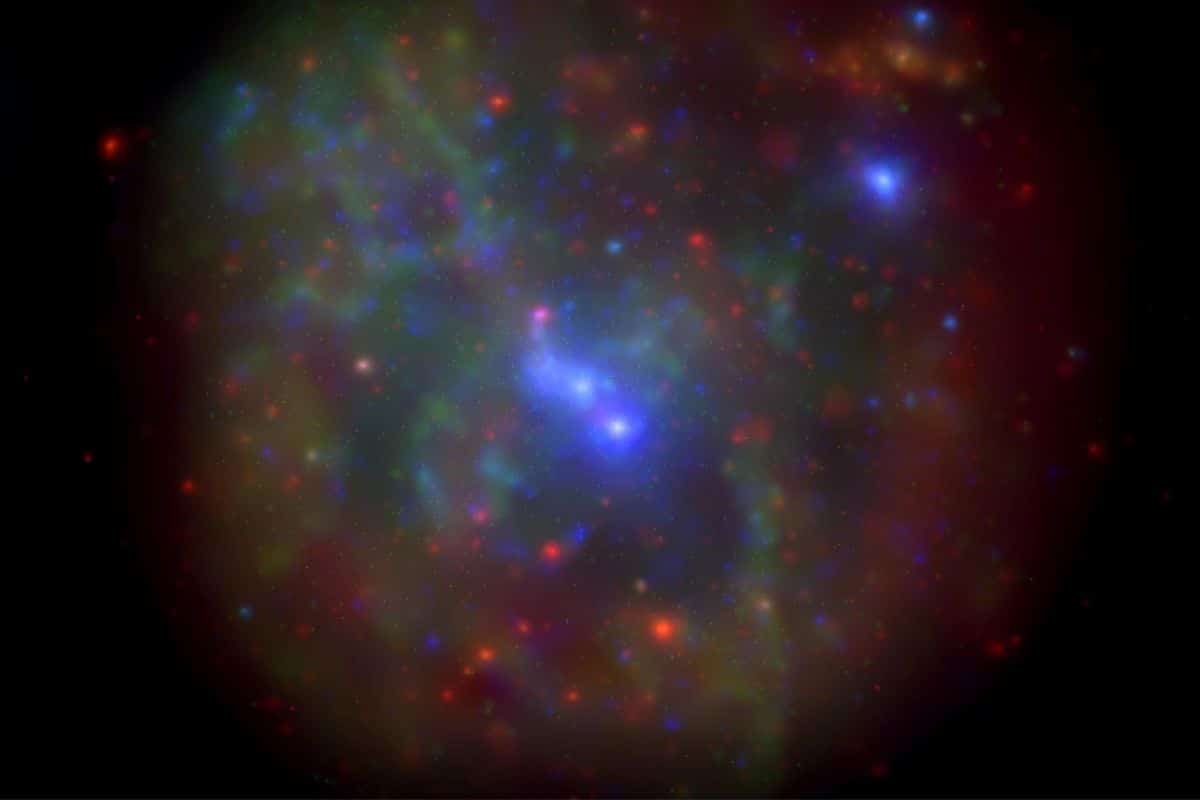

Sagittarius A* doesn’t seem to want to give up his secrets.
At the heart of our galaxy we find a monstrous black hole. And this black hole, called Sagittarius A*, is a fickle one. Astronomers have known for decades that Sagittarius A* flickers every day, sometimes becoming ten to a hundred times brighter than normal. But why?
Sagittarius A* (abbreviated Sgr A*, pronounced “Setsj Ee Star”) is, as mentioned, a supermassive black in the center of the Milky Way. The object is about 25,800 light-years away from our parent star, toward the constellation Sagittarius. The black hole has a weight of four million times the mass of our sun, making it the heaviest black hole in the Milky Way.
Researchers have been monitoring the flicker of Sagittarius A* for years. And there is no denying that the black hole is quite erratic. For example, data shows that the environment of the black hole flickered quite a bit between 2006 and 2008. A fairly calm and quiet period followed between 2008 and 2012. After 2012, the flickering increased again.
Cartridge
To learn more about this so-called ‘flares’ of the giant black hole, a new research team decided to sift through 15 years of collected data, looking for patterns. That long series of measurements is available because NASA’s Swift satellite has been glancing at the central black hole every three days since 2006.
No conclusive statement
But unfortunately; even after intensive research, a conclusive explanation for the flickering of Sagittarius A* is not forthcoming. The black hole in the center of our Milky Way appears to not only flicker irregularly from day to day, but also in the long term. The researchers failed to detect a pattern.

X-ray of the galactic center. The black hole Sgr A* is in the center. Surrounding the black hole are several binary stars that contain either a neutron star or a black hole. Image: NASA/Swift/N. Degenaar (Univ. of Michigan
So how exactly the flares arise, remains unclear to this day. “It was previously thought that more flickers follow after gas clouds or stars pass by the black hole,” says researcher Jakob van den Eijnden. “But there is no evidence for that yet. And we cannot yet substantiate the suspicion that the magnetic properties of the surrounding gas play a role.”
unpredictable
It means that the behavior of the black hole in our galaxy will remain unpredictable in the long term. So Sagittarius A* doesn’t seem to want to give up his secrets. By the way, it didn’t a few years ago, when the black hole suddenly started to shine 75 times more brightly over a period of only two hours. Although the black hole varies in brightness regularly, researchers had never seen it so bright in infrared. Even then, astronomers were faced with a great mystery.
Researchers continue the study of the mysterious black hole. Because although it may not look like it yet, the expectation is that one day we will understand Sagittarius A* better. For example, the astronomers suspect they will collect enough data in the coming years to rule out whether the variations in the flicker at Sagittarius A* are due to passing clouds of gas or stars or something else.
Source material:
“Black hole in the center of the Milky Way also fluctuates in the long term” – Astronomie.nl
Image at the top of this article: NASA/Swift/N. Degenaar